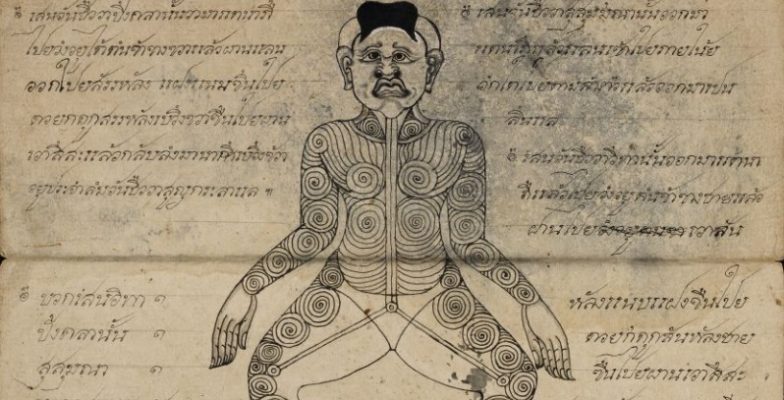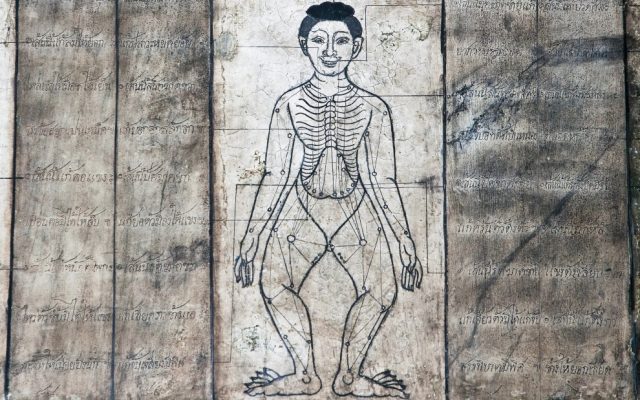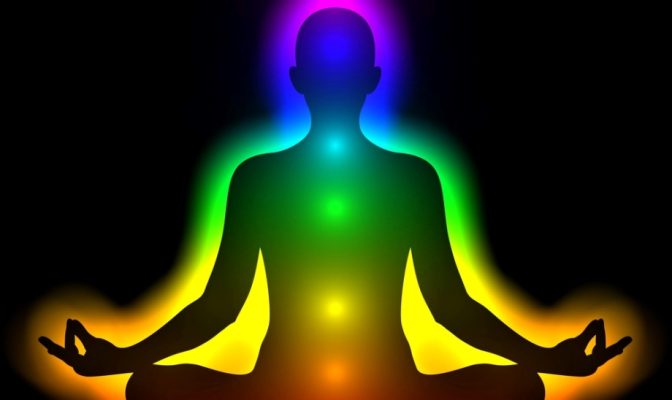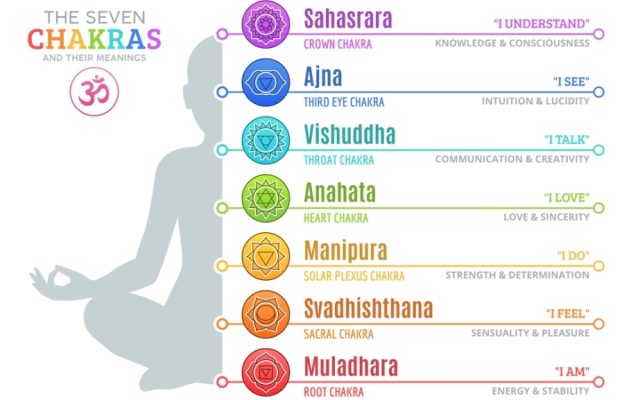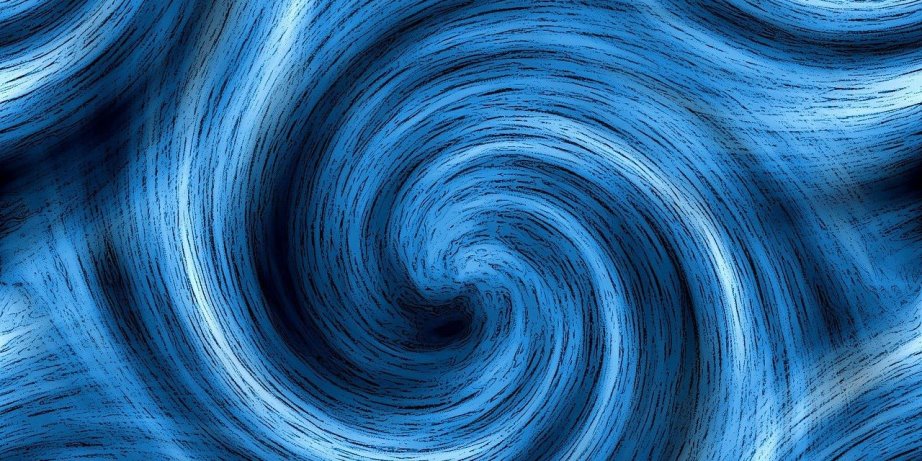
The concept of Lom in Thai Massage and in Thai Traditional Medicine (TTM) can loosely be translated as “wind,” “air,” or “breath,” and plays a crucial role in the Thai Healing Arts. Yet, mind that the word Lom can be used in different contexts with somewhat different meanings, making it a rather complex idea.
In the context of Thai Massage, it can simply point to our physical “mobility” or even “accumulated tension in a body part,” or by contrast rather to “energy” or more particularly to Lom Pran i.e. Pranic Wind, which then refers to Vital Life Force (Life Energy), being rather similar to the concept of Prana (India) and Chi or Qi (China). As a rule, it’s believed that Lom Pran is distributed through the body via the Sib Sen Energy Channels system.

In a more general sense, Lom refers to all animation, movement, motion, and circulation in the body, which, apart from the circulation of Life Force, includes the respiratory system (breath), circulatory and digestive system (movement of blood and other fluids), nerve pulses, movement of the joints and limbs, and so on.
As such, if Lom in the body doesn’t act or move in an appropriate way it will give rise to various discomforts and ailments. In Thailand, there’s also a particular disease that’s called Lom, which can cause dizziness, paralysis, loss of consciousness or even death.
Lom or Wind is also specifically defined as one of the fundamental Thai Four Elements, being Earth (Din), Water (Naam), Fire (Fai), and Wind (Lom or the Wayo Tad). In this case, Lom is considered to be responsible for circulation, movement, and energy in the body to perform activities and functions.
With respect to the above, think, for instance, of Wind (movement) that makes the Water Element (for example, blood) reach a physical cell (a material structure i.e. the Earth Element) for the digestion or assimilation of nutrients (needing heat, combustion i.e. the Fire Element).
It’s also thought that the Wind Element (Lom) circulates or flows in six different directions within the body, which are considered six types of Lom. This, of course, reminds us strongly of the concept of the Prana Vayus or Five Winds in Yoga.
At any rate, the Thai people recognize:
- Wind that flows from the lower to the upper part of the body,
- Wind that flows from the upper to the lower part of the body,
- Wind that flows inside the abdominal region (but outside of the stomach and intestines),
- Wind that flows inside the stomach and intestines,
- Wind that flows throughout the entire body via our circulatory system, and
- Wind that represents the breath of the respiration process.
There’s also Wind external to the body, which is the air and wind in the atmosphere. Another type of Wind that is sometimes mentioned is the Wind that flows around the body i.e. a subtle Wind that could be compared to a surrounding energetic field, much like the idea of an Aura, which is connected to (or another manifestation of) the inner subtle Wind or Lom Pran.

Additionally, Lom can be either gross or subtle. Gross Lom (Gross Wind) includes our respiration, blood circulation, digestion and assimilation processes, muscular contraction, nerve activity, and the movement of hormones and fluids in our body. Subtle Lom (Subtle Wind) includes our psychophysical and psychophysiological energy, emotions, mind, consciousness, and Life Force Energy.
In any case, in conclusion one could say that the use of the word Lom may refer to the breath, movement, and mobility of and in the physical (gross) or mental (subtle) body, or alternatively to Pranic Life Force in the subtle body related to specific Sen Energy Channels that conduct Lom Pran or Subtle Wind.
In Thailand, it’s thought that (the flow and proper direction of) Lom in the body — both gross and subtle Lom — can be manipulated i.e. managed through herbal medicine, breathing exercises, meditation, acupressure, massage, joint mobilization, stretches, poses and specific exercises, the latter two typically referring to Thai Yoga Self-Stretching aka Reusi Dat Ton.










